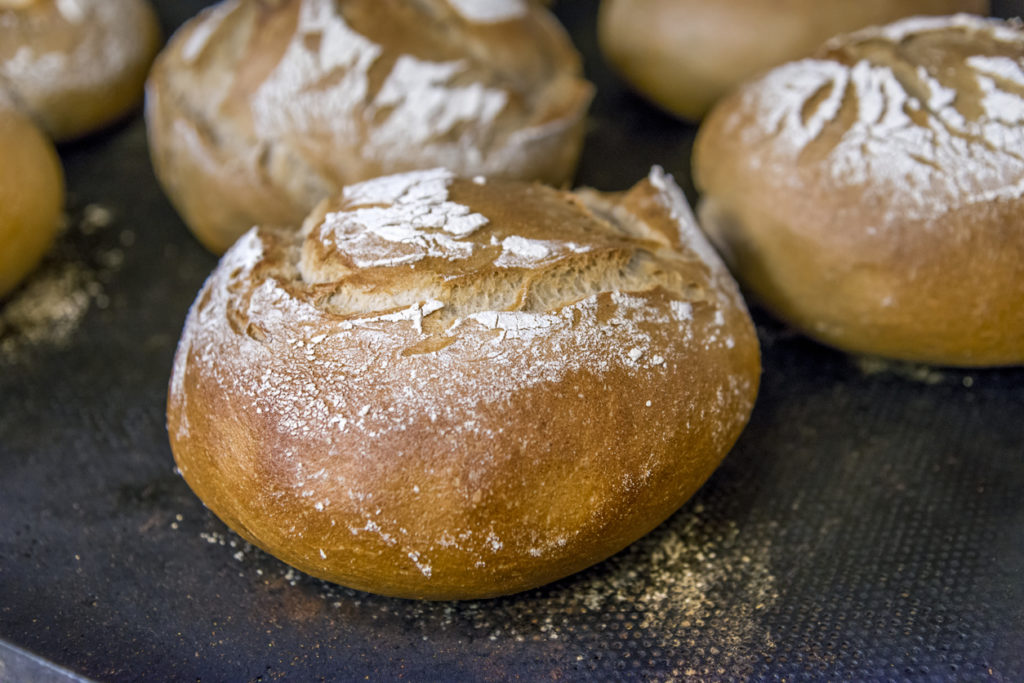- General
All about yeast – Bread’s unicellular best friend

Yeast is a microscopic, egg-shaped, single-cell fungus. But it’s so much more than a mere unicellular organism. The Egyptians began using S. cerevisiae yeast for baking thousands of years ago, and yeast-leavened bread sat at the heart of the European and Mediterranean diet for many thousands of years. In 2019 the man behind the Xbox, Seamus Blackley, baked a loaf of sourdough using yeast scraped off an ancient Egyptian pot. It was, apparently, 4,500 years old.
We couldn’t do what we do without yeast, the microorganism humans have used for millennia to make bread, wine and beer. Let’s explore the world of small-yet-mighty yeast, and take a look at how it makes our artisan bakery magic happen.
About yeast – It’s absolutely everywhere!
Yeasts grow everywhere. It even grows on our skin. If there’s food and water yeast will thrive. If not it goes dormant until things improve, spending its time in suspended animation.
The yeast mostly used in our artisan bakery world is Saccharomyces cerevisiae, a yeast with countless strains, each with its own unique features, carefully bred to produce the most gas and give bakers the fastest fermentation speeds.
Some breads, including sourdough, harness different yeasts, others are bred specially to use in lean, sweet, and enriched doughs.
It’s a chemistry thing…
Yeast eats glucose. If there isn’t any glucose it’ll use any sugars, starches or alcohols it can find to create enzymes to turn into glucose. Flour contains a lot of starch made from long strings of sugar molecules. It also contains enzymes that make starches into sugars once the flour is hydrated, which the yeast uses for energy.
Yeast releases the energy from its sugar molecules in two ways: with or without oxygen. When there’s oxygen it makes CO2 through a process called respiration. With little or no oxygen, the yeast makes alcohol and carbon dioxide in a process called fermentation, which is less efficient. Bread harnesses some respiration and lots of fermentation.
When you knead oxygen into the dough the yeast uses it up fast to produce gas trapped inside the dough. Then it slows down and starts making alcohols and acids as well, growing more slowly to give the risen bread the different scents and flavours we love, along with different textures.
Kneading doesn’t affect the yeast itself. It simply stretches the gluten so it can hang onto the crucial nitrogen and carbon dioxide bubbles developing inside. Kneading for a second time after the dough has risen extends the gluten even more.
Not too hot, not too cold
Temperature matters. Yeast loves growing at 26 C and ferments really well at 30 – 35 C. Any lower and it slows down then goes dormant until things warm up again. It doesn’t grow well when it gets too hot, either. This is handy because it means humans can slow bread dough down, delaying the baking until later.
The temperature can also affect the flavour. Dough kept in a cold place overnight can make bread taste different thanks to a mysterious reaction that may involve enzymes in the flour, yeast metabolites, and other chemical reactions. Colder temperatures tend to make bread rise slower, giving you a tighter-textured result that’s more crumbly.
Small yet powerful
Yeasts are very, very small. Just one gram of yeast contains 20 billion single yeast cells. Add too much to your dough and it’ll taste very yeasty, and could end up flat because it releases its gas before the flour has the chance to expand. If dough is left to rise for too long it tastes yeasty and beery, and can also fail to rise properly. Low yeast breads take longer to ferment, so the dough is made very wet to help the yeast divide easily.
The effects of salt and sugar
Add a tiny bit of salt and you can make yeast work harder. Add too much salt and the opposite happens. The same goes for too much sugar, which inhibits most yeasts. That’s why there’s a special yeast used for sweet breads and sourdoughs.
Taste the magic with free wholesale artisan bread samples
Fall in love with the hard work done by our yeasty little friends. Ask for a sample artisan bakery box and we’ll send you one, crammed with tasty treats, to test-drive. Just click below.



